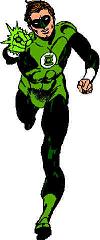Comet McNaught Makes Appearance
Labels:
SPACE
Larry O'Hanlon, Discovery News
Jan. 8, 2007 — The newly discovered Comet McNaught is putting on a surprisingly bright show this week as it nears its closest approach to the sun.
In just a few days it has begun throwing off material that has brightened it to the point where it's visible to the naked eye just after sunset.
"It's really a beauty," said astrophotographer Doug Zubenel of De Soto, Kansas.
De Soto has been watching McNaught for a few nights and said that Sunday night it was not only considerably brighter, but it had a new "hood" of material that's being boiled off the sun-facing side of the comet and blown back into the delta-shaped tail by the solar wind.
"It's really getting cooked," said Zubenel, who is also a member of the Astronomical Society of Kansas City.
To see McNaught you need a clear sky and an unobstructed view of the western horizon. The further north you are, the easier the comet will be to see.
In the early evening hours, a scan of the horizon just left of due west with binoculars should reveal Comet McNaught as a blurry object with a noticeable tail extending upwards.
After locating the comet with binoculars, it should be possible to make it out with the naked eye and then train a telescope on it — if one is available. Binoculars may not even be necessary if the brightening trend continues.
"Tonight it should be really bright," said Pat Boomer, another astrophotographer who captured stunning digital images of McNaught on Sunday from south-central Alberta, Canada. He hopes to take more pictures Monday night.
Boomer's trick to taking the pictures is to use a digital camera with a 300-millimeter telescopic lens mounted to his car. The camera sends images to his laptop inside the car, where he sits very still so as not to shake the car and spoil the shot.
Boomer's advice to people looking for the comet is to not try too early. He suggests the ideal time is between 5:40 p.m. and 6 p.m. for the best view.
"Then it just pops out at you," aid Boomer. If you want to take a picture, use a tripod, he said, and use a shutter speed of no more than 2 seconds, since the Earth's spin will blur a longer exposure.
Most important: Do it tonight.
As Comet McNaught gets close to the sun, it will also get lower in the sky and may no longer be visible after Jan. 12, according to the editors of Sky & Telescope magazine.
Comet McNaught was discovered by Australian astronomer Robert H. McNaught on Aug. 7th, 2006, when it was still very dim.
This appears to be the comet's first visit to the inner solar system, as well as its last. McNaught's current trajectory around the sun could slingshot it out of the solar system entirely.
may the force be with you






















Δεν υπάρχουν σχόλια:
Δημοσίευση σχολίου